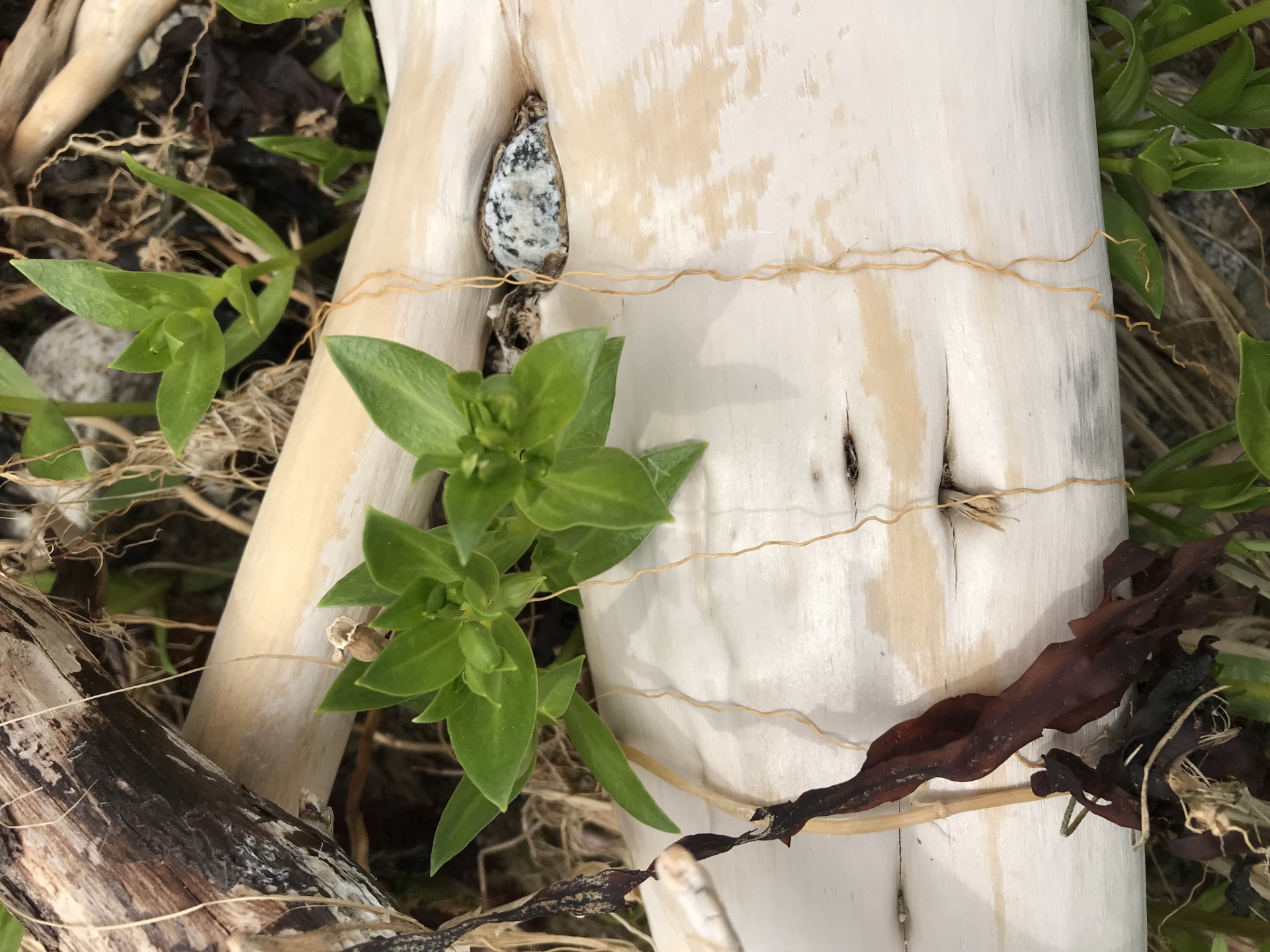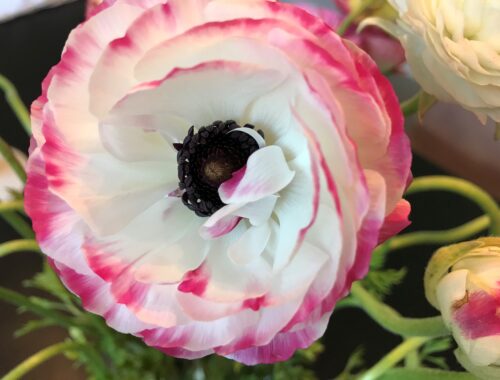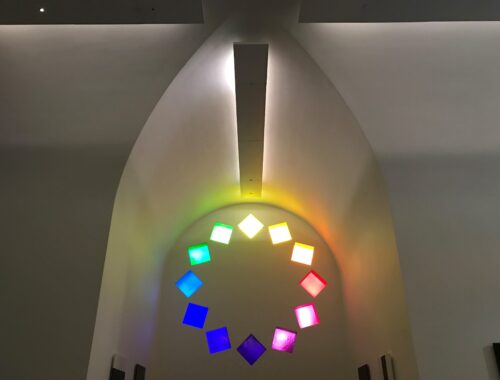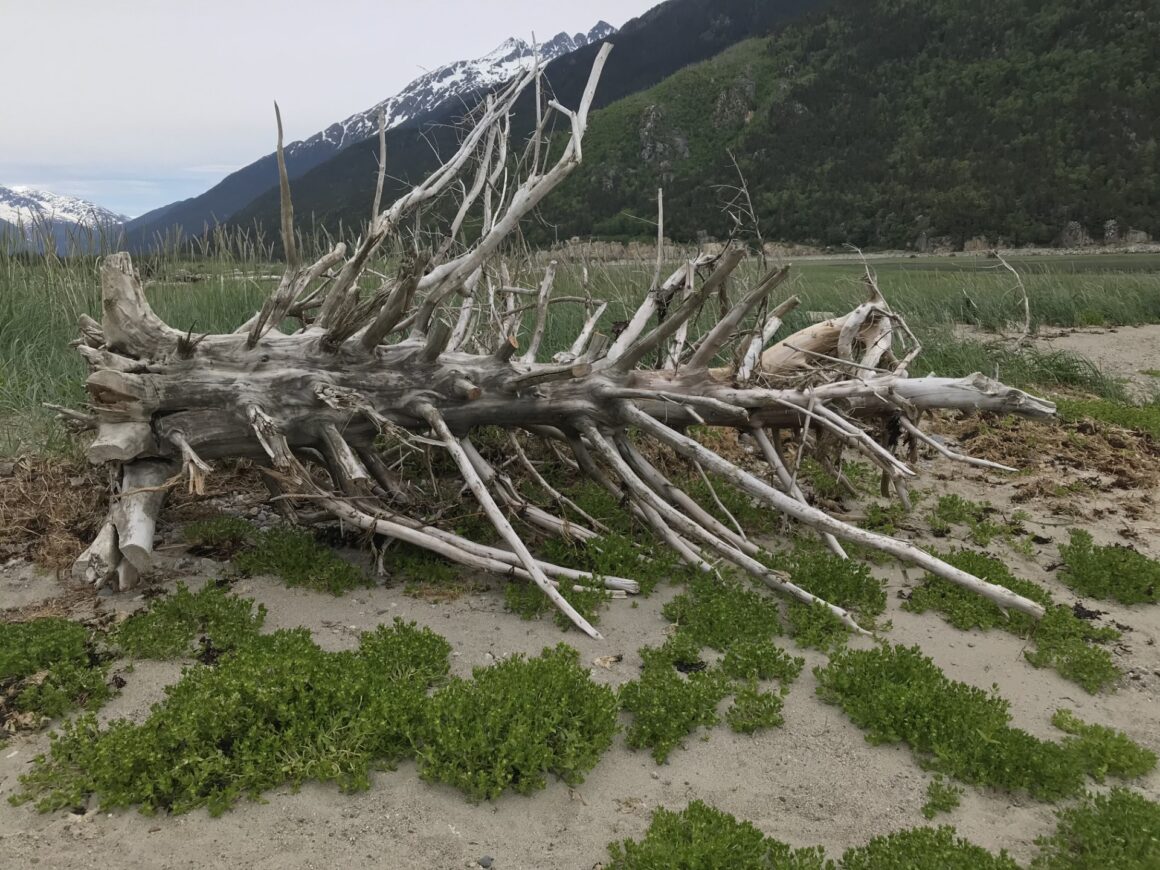
Developmental Stages
Thanks to a friend in Skagway who has lent me her car, I was able on Thursday to drive from Alderworks to the Dyea Tidal Flats with another resident artist; the two of us chose different exploratory paths once we arrived and spent the next more than two hours gathering images and sounds, natural material artifacts and inspiration. Later in the day, we drove another few miles in the opposite direction to Nahku Bay for more time spent in awe at the detailed wonders the liminal space was offering us.

You know that I’m fascinated by trees and find in my movement among them a unique strength and understanding. Before this residency, though, those conversations—wordless but rich—had always taken place with living trees (“living” according to the standard definition), their roots still reaching deep and wide, their limbs and leaves or needles up into the sky, toward the sun. On the flats and at the tidal edge of Nahku Bay’s rocky shore, though, are whole trees downed as driftwood, graveyards not in stasis but in active process still, the entire height of a tree now re-oriented to length laid out, fully accessible—with a walk, not a climb—to my contemplations.
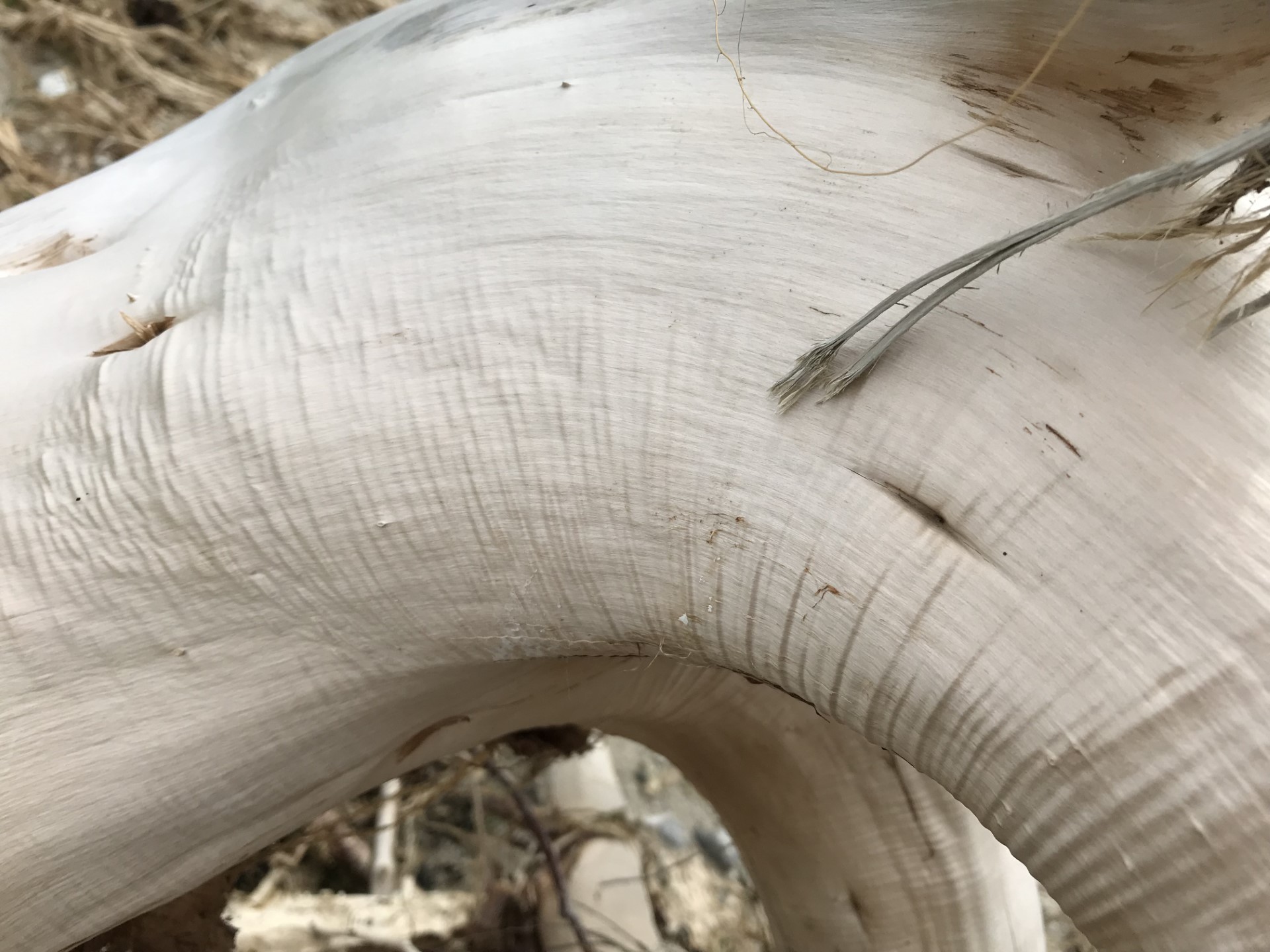
From storm- and erosion-uprooted trees that begin as horizontal skeletal remains beached by the tides, with branches exposed as ribs along the spine of trunk; to bark becoming grassy fringes as wind and waves peel it off the now disconnected sapwood; to heartwood as bleached bones; to skin-textured corners that cradle a stone or shelter an animal or nourish a root, the trees witness to the power of ongoing possibilities and the beauty available at each stage of elemental revelation and transformation.
